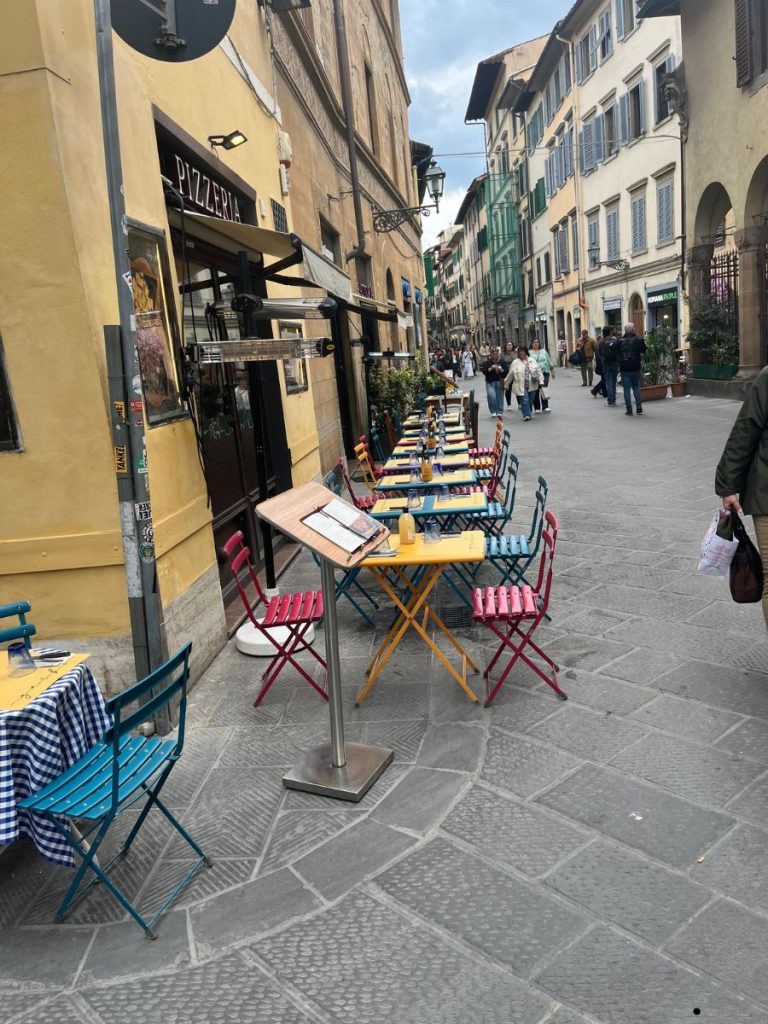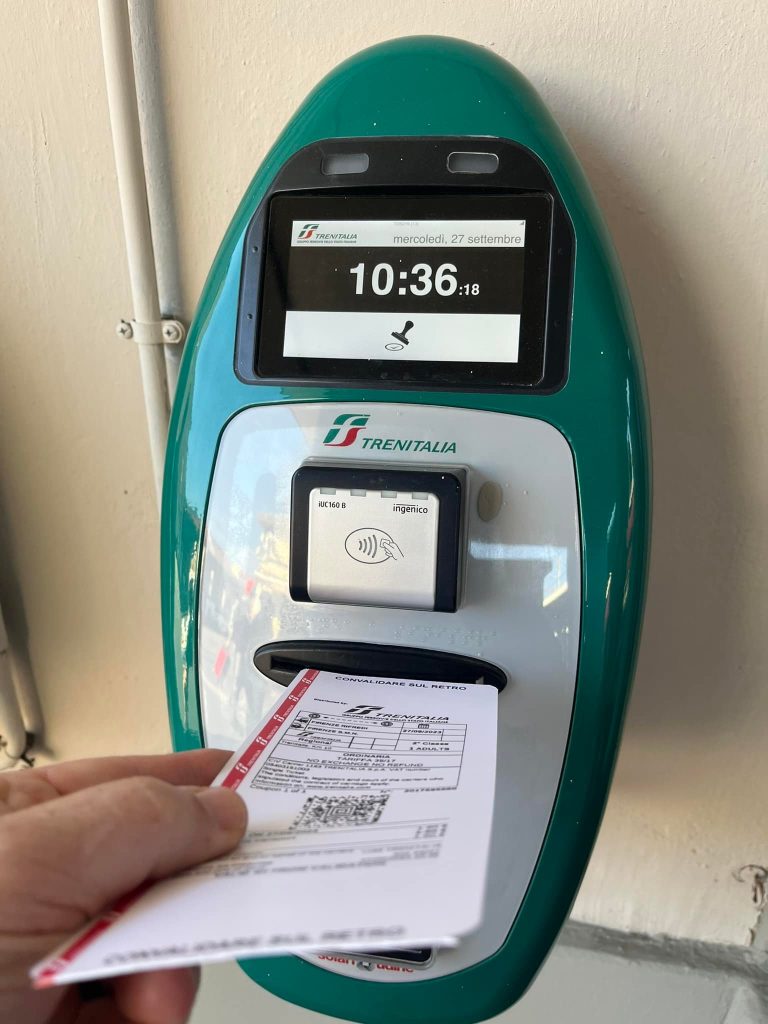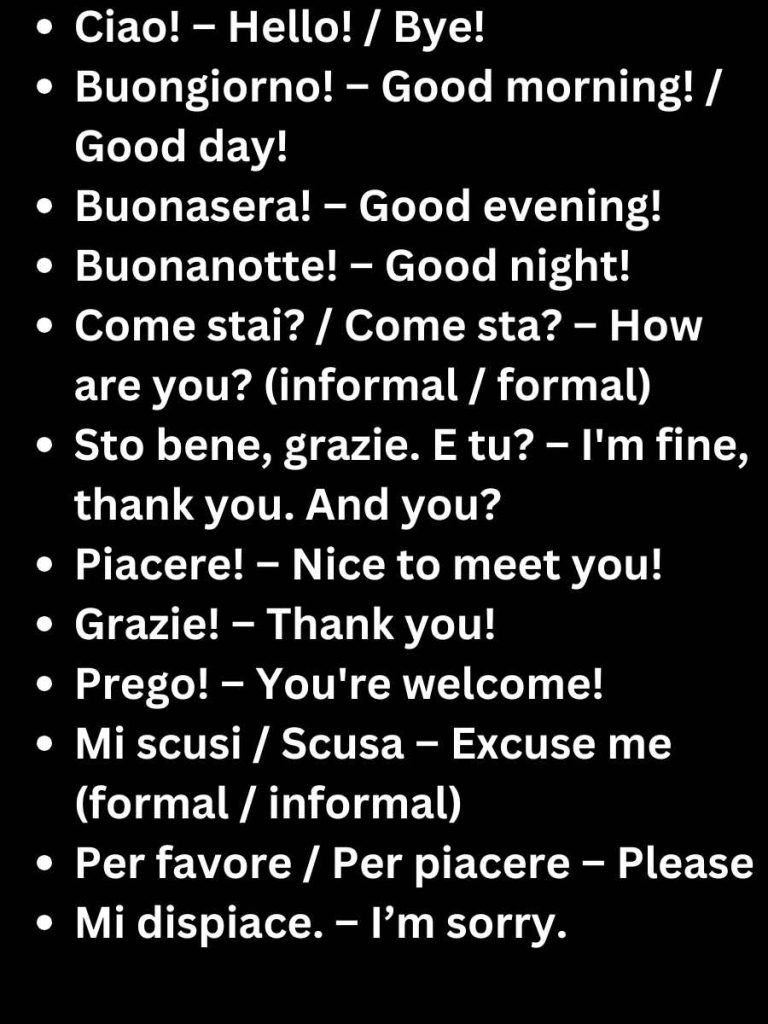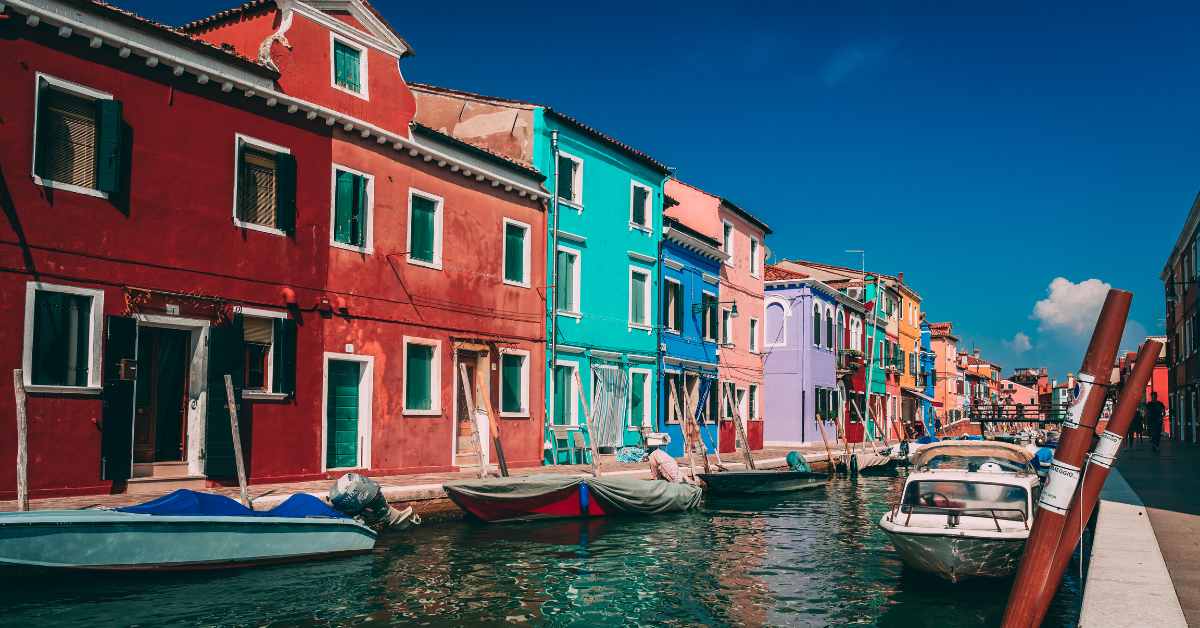We all love traveling, but unfortunately, traveling is not cheap. If it weren’t, most of us would have already ticked off a couple of places off our bucket list. This is especially true if you want to travel to the one country everyone else dreams of visiting: Italy!
The good news? With a little insider knowledge, you can experience la dolce vita without breaking the bank. By following these 15 smart strategies—honed from years of travel experience—you’ll save hundreds of euros while still enjoying the very best of Italy.
The key here is to think like a local rather than a tourist. Italians know how to savor life’s pleasures without overspending, and by adopting their habits—standing at the bar for coffee, dining where locals eat, and avoiding peak-season markups—you’ll stretch your budget much further. Whether it’s securing cheap train tickets, finding hidden free attractions, or bypassing sneaky fees, these tips will help you travel smarter.
So pack your bags, grab your notebook, and get ready to explore Italy in a way that’s both affordable and unforgettable. From the canals of Venice to the rolling hills of Tuscany, these money-saving secrets will let you enjoy more for less.
1. Travel During Shoulder or Off-Season
The table below shows how much some of the things cost in Italy during the peak season versus the off-season.
| Expense Category | Peak Season (June-Aug, Holidays) | Off-Season (Apr-May, Sept-Oct, Winter*) |
|---|---|---|
| Mid-range hotel (Rome/Florence) | €180-€250/night | €90-€150/night |
| Budget apartment rental | €120-€180/night | €60-€100/night |
| Flight from US/UK | €600-€900 | €300-€500 |
| High-speed train (Rome-Florence) | €50-€80 | €20-€30 (booked early) |
| Pasta dish at trattoria | €14-€18 (tourist areas) | €10-€12 (local spots) |
| Aperitivo cocktail | €12-€15 | €6-€8 |
| Guided tour (Vatican/Colosseum) | €50-€75 | €30-€50 |
Italy’s peak tourist season—June through August—brings sweltering heat, massive crowds, and sky-high prices. Instead, aim for the shoulder seasons (April-May and September-October), when the weather is still pleasant but the masses have thinned. You’ll find hotel rates slashed by 30-50%, shorter lines at major attractions, and a more relaxed atmosphere. Even better, locals are more approachable when they’re not overwhelmed by summer tourism.
Winter travel (November to March, excluding Christmas and Easter) can also yield incredible deals, especially in cities like Rome, Florence, and Venice. While some coastal towns shut down, cultural hubs remain lively, and you’ll have landmarks like the Colosseum or Uffizi Gallery nearly to yourself. Just pack a warm jacket and check for seasonal closures—many agriturismos and smaller hotels in rural areas take winter breaks.
If you must visit in summer, book accommodations and transport well in advance to lock in lower rates. But whenever possible, shifting your trip by just a few weeks can save you hundreds while offering a more authentic Italian experience.
Related Post: The best time to visit Italy
2. Book Flights Strategically

Airfare is often the biggest expense of any trip, but smart booking can drastically cut costs. Start by using flight comparison tools like Google Flights or Skyscanner, which track price trends and alert you to drops. Flexibility is key—flying midweek (Tuesday-Thursday) is usually cheaper than weekends, and red-eye flights often come with significant discounts.
Consider flying into secondary airports, which budget airlines frequently use. For example, Milan Bergamo (Ryanair’s hub) is farther from the city center than Malpensa or Linate, but the savings can be substantial. Similarly, Pisa’s airport serves Florence just as well, with cheaper fares than flying directly into Florence’s smaller, pricier airport.
If you’re already in Europe, budget airlines like Ryanair and EasyJet offer shockingly low fares for short hops—sometimes under €30. Just be mindful of baggage fees, and always verify the airport’s distance from your destination. A little research upfront can mean hundreds back in your pocket.
3. Use Public Transportation Instead of Taxis

Italy’s train system is one of Europe’s best, offering an affordable, efficient way to travel between cities. High-speed trains (Frecciarossa, Italo) are pricier but save time on long routes like Rome-Florence or Milan-Venice. For shorter distances, regional trains are a bargain—just remember to validate your ticket before boarding to avoid fines.
Within cities, skip taxis entirely unless absolutely necessary. Rome’s metro, Florence’s buses, and Venice’s vaporettos (water buses) are far cheaper and often faster in heavy traffic. Multi-day transport passes (like Rome’s 72-hour ticket) pay for themselves quickly if you’re sightseeing extensively.
Walking is not only free but also the best way to stumble upon hidden gems. Most Italian city centers are compact, with attractions clustered together. A leisurely stroll through Rome’s cobblestone alleys or along Venice’s canals costs nothing and often leads to the trip’s most memorable moments.
4. Avoid Tourist-Trap Restaurants

Nothing drains a budget faster than overpriced, mediocre meals near major attractions. Restaurants in Piazza Navona, near the Duomo in Florence, or along Venice’s Grand Canal cater to tourists—not locals—and often charge double for inferior food. Instead, wander a few blocks away, where authentic trattorias serve hearty, reasonably priced dishes.
Look for telltale signs of a good local spot: menus in Italian only (or with English translations tucked inside), a clientele that includes residents, and no aggressive touts luring passersby. Osterias and wine bars (enotecas) often offer better value than full-service ristorantes.
House wine is another budget-saver. Italians take pride in their vino della casa, which is typically €3-€5 per glass and just as good as bottled options. Pair it with a pasta dish or antipasti platter, and you’ve got a satisfying meal without the markup.
5. Take Advantage of Free Attractions
Italy’s most iconic sights don’t always require a ticket. The Pantheon, Trevi Fountain, and Spanish Steps in Rome are entirely free, as are Venice’s canals and Florence’s Piazza della Signoria. Even St. Peter’s Basilica—the crown jewel of the Vatican—charges nothing for entry (though the dome climb costs extra).
Many state museums and archaeological sites offer free admission on the first Sunday of each month, including the Colosseum and Pompeii. Churches, often overlooked by guidebooks, house masterpieces by Michelangelo and Caravaggio for the price of a modest donation.
Parks and gardens, like Rome’s Villa Borghese or Florence’s Boboli Gardens, provide a peaceful retreat from the crowds. A picnic with fresh market finds makes for a delightful (and cheap) afternoon. With so much beauty available at no cost, you can splurge selectively on must-see paid attractions.
6. Stay in Budget Accommodations

Luxury hotels in Italy can devour your budget, but charming, affordable alternatives abound. Family-run pensioni (small guesthouses) offer a cozy, authentic stay at a fraction of the cost of chain hotels. In rural areas, agriturismos—working farms that welcome guests—provide hearty home-cooked meals and idyllic settings, often for under €80 per night. For solo travelers or groups, hostels have evolved beyond bunk beds; many now feature private rooms with en suite bathrooms, blending affordability with comfort.
Location matters just as much as price. Staying slightly outside the historic center can mean significant savings without sacrificing convenience. In Florence, Oltrarno offers a local vibe with easy walking access to sights. In Rome, neighborhoods like Trastevere or Monti balance proximity to attractions with lower prices. Always check public transport links—being near a metro stop or bus line can make an outlying hotel a smarter choice than a pricier central option.
Booking directly with the property often yields better rates than third-party sites. Many small hotels and B&Bs offer discounts for cash payments or longer stays. If you’re flexible, last-minute booking apps like HotelTonight can snag deep discounts, especially during shoulder season. With a little research, you can sleep comfortably without overspending.
7. Skip the Tourist Menus & Order Like a Local
Tourist menus (menu turistico) might seem convenient, but they’re often overpriced and underwhelming, offering reheated pasta and bland versions of Italian classics. Instead, embrace the local dining rhythm. Start with antipasti (appetizers like bruschetta or cured meats), share a primo (pasta or risotto), and add a contorno (side dish) if still hungry. This way, you sample a variety of flavors without committing to a costly multi-course meal.
Portions in Italy are designed to be enjoyed in sequence, not all at once. A primo piatto like cacio e pepe or ragù alla bolognese is often hearty enough for lunch. For dinner, ordering just a pasta dish and a vegetable side (contorno) keeps the bill reasonable while still leaving room for gelato. And don’t overlook aperitivo culture—many bars offer free snacks with a drink purchase in the early evening, effectively doubling as a light dinner.
Water is another easy save. Tap water (acqua del rubinetto) is safe to drink, and Italians won’t bat an eye if you request it. Avoid bottled water unless you’re in a spot where tap isn’t an option. A simple “Un’acqua naturale/gassata, per favore” will keep you hydrated without the €3-per-bottle habit.
Tip: If you go to touristy restaurants (some of which you need to queue to get a table), most waiters will try to lure you to order more food, drinks, and even water. It happened to us and we had to carry a lot of food to our room. The food wasn’t as good as advertised (going by the reviews on Google), and definitely not worth the 30-minutes waite in lin,e so beware!
8. Buy Train Tickets in Advance

Italy’s rail system is a joy, but last-minute tickets can be shockingly expensive. High-speed trains (Frecciarossa, Italo) often offer “Super Economy” fares up to 60% off if booked weeks ahead. For example, a Rome-Florence ticket might cost €20 if purchased early but soar to €50 on the day of travel. Trenitalia and Italo’s websites (or apps like Trainline) make comparison shopping easy.
Regional trains (Regionali) don’t require advance booking and are priced flatly, making them ideal for short hops like Florence-Pisa or Venice-Padua. Just validate your ticket before boarding to avoid fines. For longer routes, even a few days’ notice can yield savings. If your plans are flexible, off-peak trains (midday, weekdays) are cheaper than rush-hour or weekend services.
Passes like Eurail can be worth it for extensive travel, but for most visitors, point-to-point tickets are cheaper. One exception: the Campania ArteCard in Naples, which combines transit and museum discounts. Always double-check for strikes (scioperi), which can disrupt schedules without warning.
9. Avoid Roaming Charges with a Local SIM
Staying connected in Italy doesn’t require expensive international plans. For €10–20, you can pick up a local SIM card with generous data allowances. TIM, Vodafone, and Iliad offer prepaid options at airports or corner shops (tabaccherie); just bring your passport for registration. EU travelers can use their home SIMs thanks to free roaming laws, but check fair-use limits.
Free Wi-Fi is plentiful in cafés, hotels, and even some public squares, but it’s often slow or requires a purchase. Download offline maps (Google Maps or Maps.me) to navigate without data. For calls, WhatsApp or FaceTime work well over Wi-Fi. If you need a temporary number, services like Hushed provide cheap VoIP options.
Avoid the worst budget-killer: dynamic currency conversion (DCC). When paying by card, always choose euros—letting your home bank handle the exchange guarantees better rates than the merchant’s inflated conversion. Cards like Revolut or Wise offer fee-free withdrawals at Italian ATMs (Bancomat), but steer clear of Euronet machines, which tack on hefty fees.
Tip: If you are traveling through many countries, I would recommend installing an e-sim like Airalo and always buy the data plan in advance.
10. Drink Coffee Like an Italian (and Save Money)

Italy’s coffee culture has unspoken rules that can save you euros daily. Ordering un caffè (an espresso) at the bar costs as little as €1, while sitting at a table often doubles or triples the price. Cappuccinos are breakfast drinks—ordering one after 11 a.m. marks you as a tourist. If you want milk later, ask for a caffè macchiato (espresso “stained” with a dash of milk).
Coffee chains like Starbucks are rare and overpriced in Italy. Instead, embrace the local bar ritual: drink your espresso quickly while standing, then move on. Many bars offer a caffè sospeso—a “suspended coffee” you prepay for someone in need—a lovely tradition that costs little but enriches your experience.
For tea drinkers, note that tisane (herbal teas) are common, but black tea is often served with lemon, not milk. If you crave a cappuccino, enjoy it guilt-free—just do as the Romans do and have it with breakfast, not dessert.
11. Take Free Walking Tours

Guided tours can illuminate Italy’s history, but pricey group excursions aren’t the only option. Tip-based walking tours (like those from Sandeman’s or local volunteers) cover major sights while letting you pay what you feel is fair. These tours often reveal hidden corners even guidebooks miss, from secret courtyards in Rome to Venetian mask-making workshops.
Self-guided tours are another frugal alternative. Apps like Rick Steves’ Audio Europe offer free, engaging commentary for sites from the Forum to the Uffizi. Pair these with a detailed map, and you’ve got a personalized tour at your own pace. Many cities also have free (or donation-based) audio guides available at tourist offices.
For deeper dives, book specialized tours selectively. A €20 skip-the-line Colosseum tour might be worth it, but a €80 gondola ride isn’t. Prioritize experiences where the guide adds real value—like a food tour in Bologna or a Vatican insider’s perspective—and skip the rest.
12. Shop at Local Markets for Food & Souvenirs
Italy’s markets are treasure troves of fresh, affordable food and unique souvenirs. In Florence, the Mercato Centrale’s upper level offers gourmet eats at half the price of sit-down restaurants. Rome’s Campo de’ Fiori and Turin’s Porta Palazzo markets burst with seasonal produce, cheeses, and cured meats—perfect for picnic supplies. Even small towns host weekly markets where you can snack on €1 arancini or bargain for leather goods.
Avoid souvenir shops near landmarks, where mass-produced trinkets carry steep markups. Instead, seek out artisan workshops: Venetian glass beads from Murano, Florentine paper marbling, or Sicilian ceramics. These items cost more upfront but last a lifetime, unlike cheap keychains.
For wine lovers, supermarkets stock excellent bottles for €5–10. Look for DOCG labels (Italy’s highest quality designation) or ask staff for recommendations. A €8 Chianti from a grocery store often rivals a €30 restaurant bottle.
13. Use Discount Cards & City Passes Wisely
City passes can save money—if used strategically. The Roma Pass (€32 for 48 hours) includes free transit and museum entry, but only pays off if you visit two major sites (e.g., Colosseum + Borghese Gallery). The Firenze Card (€85) is pricey but grants skip-the-line access at the Uffizi and Accademia—worth it in peak season but unnecessary in winter.
Student discounts are widely available with an ISIC card. Many museums (like Rome’s Capitoline Museums) offer reduced or free entry to under-25s. Seniors and teachers should also ask—discounts aren’t always advertised.
For niche interests, combo tickets like Pompeii+Herculaneum (€22) or Venice’s museum pass (€39) can be smart. But always do the math: If you’d only visit one attraction, à la carte tickets are cheaper.
14. Avoid Dynamic Currency Conversion (DCC)
This sneaky fee lurks in credit card transactions and ATM withdrawals. When prompted to pay in your home currency (e.g., USD), always refuse—the merchant’s exchange rate is worse than your bank’s. Insist on paying in euros to avoid a 3–7% markup.
ATMs (Bancomat) are the best cash source, but stick to bank-affiliated ones. Independent ATMs (like Euronet) advertise “zero fees” but embed awful exchange rates. UniCredit, Intesa Sanpaolo, and Poste Italiane machines are reliable. Withdraw larger sums to minimize transaction fees.
Credit cards with no foreign fees (Chase Sapphire, Capital One) are ideal. Notify your bank of travel dates to avoid frozen cards. Small businesses still prefer cash, so keep €20–50 handy for markets and cafés.
15. Learn Basic Italian Phrases to Avoid Tourist Pricing

A few words in Italian can prevent overcharging and open doors. Greet shopkeepers with “Buongiorno” (morning) or “Buonasera” (afternoon/evening)—it signals respect. At markets, ask “Quanto costa?” (How much?) before touching items to avoid “flexible” pricing.
In restaurants, “Il conto, per favore” requests the bill politely. If you suspect a mistake, “Mi scusi, c’è un errore” (Excuse me, there’s an error) is more effective than angry English. Locals appreciate effort, even if your accent is rough.
Bargaining isn’t common, but it’s acceptable at flea markets (mercato delle pulci) or for bulk purchases. A polite “Farebbe uno sconto?” (Could you give a discount?) might knock 10–20% off.
Conclusion
Italy’s magic doesn’t require a luxury budget. By traveling off-peak, eating thoughtfully, and embracing local habits, you’ll save hundreds without sacrificing joy. Remember: Italians prioritize quality over quantity—a €3 espresso savored at a historic café beats a €15 rushed meal.
Now it’s your turn! Which tip will you try first? Share your own Italy hacks in the comments. Buon viaggio!

